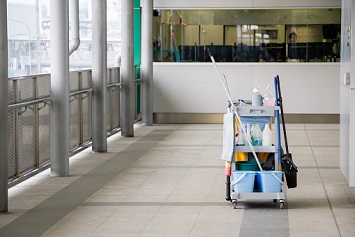The mercury is falling in thermometers across the country, and people are starting to head indoors. This annual population shift is something for facility managers to take note of, as it comes with a dramatic uptick in communicable disease, including (and especially) Norovirus. While mistakenly referred to as the “stomach flu” it is a completely different virus. It is the leading cause of gastroenteritis, and with its rapid onset, Norovirus can quickly overwhelm your facility if it’s not properly cleaned up.
Norovirus presents with easily noticeable symptoms: diarrhea, stomach pain, and vomiting. This last symptom is particularly problematic for facility managers, as one vomiting incident can be enough to spread the virus throughout the building. To make matters worse, Norovirus can live on surfaces for up to two weeks, so quick and thorough remediation is essential.
Recommended Cleaning Procedures
What is the proper way to clean up a vomiting incident in the workplace? The Centers for Disease Control and Prevention have a series of steps to follow to help minimize the impact of Norovirus:
- Put on rubber or disposable gloves and then wipe the area with paper towels.
- Disinfect the area using a bleach-based cleaner. Make sure the entire affected area is treated.
- Let the bleach-based disinfectant stand for at least 5 minutes.
- Then, clean the entire area again with hot, soapy water.
- Finish cleaning by cleaning soiled laundry, taking out the trash, and then washing your hands.
You may also want to disinfect any nearby surfaces, such as countertops, utensils, or equipment as Norovirus can potentially spread through the air.
If you don’t have an appropriate cleaner on hand, you could always make one, using bleach and water. The Environmental Protection Agency recommends a solution with a concentration of 1,000 to 5,000 parts per million, or 5 to 25 tablespoons of bleach per gallon of water.
There are also commercially available bodily fluid cleaning kits available, should you want to have specialized equipment on hand.

